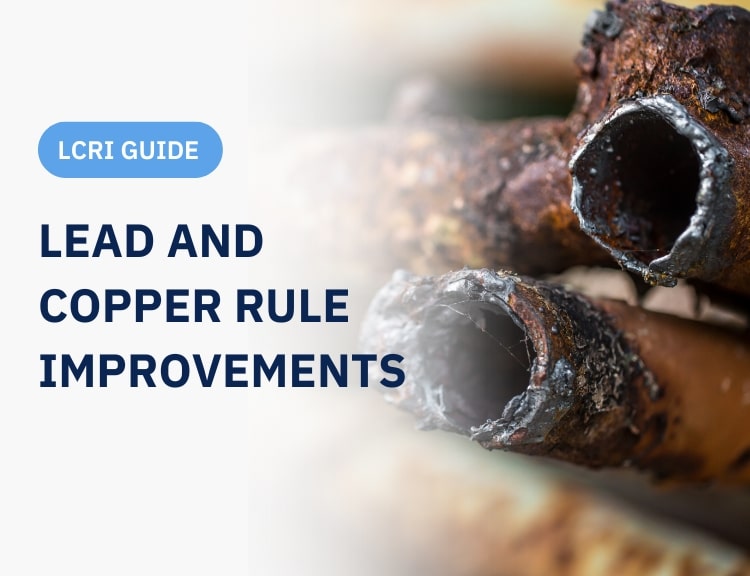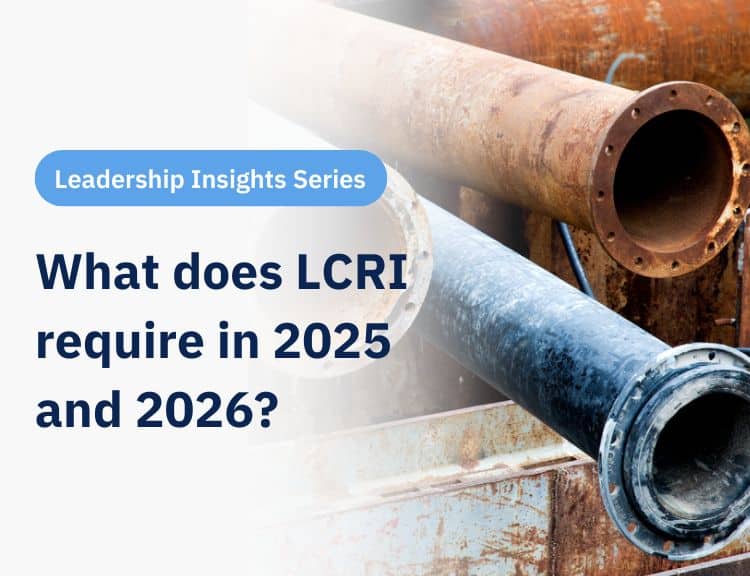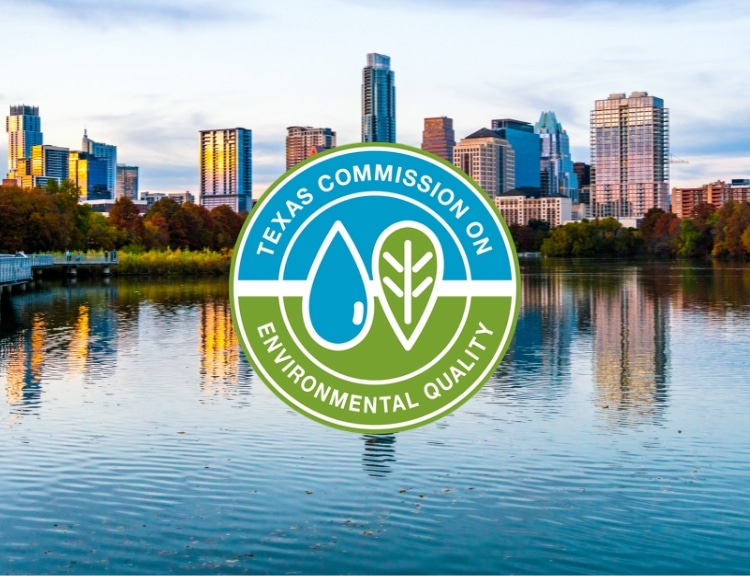The EPA released the long-anticipated Lead and Copper Rule Improvements (LCRI) on Oct. 8. This new guidance provides more specific requirements for water systems as it relates to water testing, unknown management and lead line replacements. Below, we give a quick breakdown of the new rule in several key areas:
What’s the difference between the LCRI and LCRR? Will I still need to be compliant with LCRR?
The LCRR, which was released in January 2021, was the precursor to the recently released LCRI. Water systems must begin complying with the provisions of the LCRI three years following the publication of the final rule in the Federal Register (so late 2027). In the meantime, water systems must continue to comply with the Lead and Copper Rule – with the exception of a few 2021 LCRR rule requirements that systems must comply with starting October 16, 2024. These include the initial inventory submission (which should already be done), customer notifications of known or potential lead service lines, and 24-hour Tier 1 public notification of a lead action level exceedance (the current exceedance level is 0.015 mg/L).
Annual Reporting: Water systems must submit an annual report to their state by July 1st, starting in 2025, stating that they have notified affected customers about their service line materials and provided them with relevant information. This report should also include copies of the notification and information materials used.
What does the LCRI say about lead pipe replacements?
The LCRI requires nearly all lead pipes or GRR to be replaced in 10 years, starting in 2027. This is in line with the Biden Administration’s campaign to replace all lead pipes in the US in 10 years. Systems that will need to replace lead or GRR are also required to submit a replacement plan to their state outlining their strategy for identifying unknown service lines, procedures for replacement, funding strategies, and a communication plan for customers. This plan must be submitted by 2027.
There are a very few exceptions to this rule for systems where it simply is not feasible to replace all lead lines in 10 years. Those systems must continually demonstrate that they are replacing LSLs as quickly as they can. LCRI also gives states flexibility to shorten the replacement timeline for some water systems.
Can I still use statistical methods to classify the unknowns in my inventory?
In a nutshell, yes. The LCRR allows for the use of statistical methods and predictive modeling to classify service line materials, and the LCRI did not provide any additional guidance. However, in order to address concerns about the accuracy of such models, the LCRI introduced a data validation requirement. Water systems must validate their service line inventories using a process that involves a visual inspection of a random sample of service lines categorized as non-lead.
There are several components within the data validation requirement, outlined as follows:
- Validation pool: The validation process focuses on non-lead service lines, specifically those categorized as non-lead based on records or the age of the service line. For instance, if a service line was installed after a known lead ban, it can be categorized as non-lead and excluded from the validation pool.
- Sample Size: The number of non-lead service lines that need to be visually inspected is determined using a statistical methodology to achieve a 95% confidence level. The confidence level is achieved based on the number of inspections. This methodology considers the total number of non-lead service lines in the system. For smaller systems with fewer non-lead lines, a minimum of 20% of these lines must be validated.
- Validation Deadline: Water systems must complete the inventory validation process by the end of the seventh year of their 10-year service line replacement program. States have the authority to set an earlier deadline, especially for systems with deferred replacement deadlines, requiring completion no later than three years before the replacement deadline.
We’ll cover more about data validation in a future blog post.
What changes, if any, in public communication does the LCRI outline?
Aside from the required notifications of known or potential lead service lines, high water sample results, and lead action level exceedances, the LCRI is vague. It mandates better communication “so that families are better informed about the risk of lead in drinking water, the location of lead pipes, and plans for replacing them” but it is up to the states to decide how to best implement this communication. The idea behind this is to give the public more resources as to the harmful effects of lead in drinking water, as well as provide more information about lead line replacement.
Learn more about the LCRI and what’s next for water systems in this on-demand webinar. Watch now!






